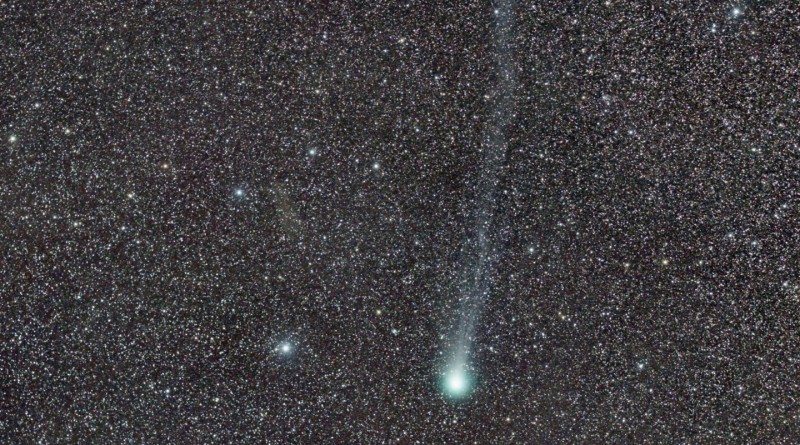
Observations made by an international team show that Comet Lovejoy has released copious amounts of ethyl alcohol (the same type found in alcoholic beverages) and sugar into space. The findings add to the evidence that comets have been a source for complex organic molecules deemed necessary for life.
“We found that comet Lovejoy was releasing as much alcohol as in at least 500 bottles of wine every second during its peak activity,” explained Nicolas Biver of the Paris Observatory, France.
The comet released gases that contained 21 different organic molecules, including ethyl alcohol and glycolaldehyde (a simple sugar). Comets are frozen fragments from the formation of our solar system and offer clues as to how things came to exist. Most comets orbit far away from the sun, but occasionally one will pass close to our star, heating up and releasing gases that scientists later study.
Comet Lovejoy, deemed as C/2014 Q2, is one of the brightest since Hale-Bopp in 1997. It passed closest to the sun on January 30, 2015 and released liquids at 20 tons per second. Using a large telescope at Pico Veleta in Spain, the scientists observed a huge glow from the comet.
Sunlight invigorates the molecules in the comet’s atmosphere, causing a glow at specific microwave frequencies. Each molecule glows at a certain frequency, which allows scientists to identify it with detectors on the telescope.
This poses the question: Did comets assist in the origin of life? Discovery of Lovejoy and other comets support this theory, as they delivered plenty of organic molecules to Earth (and possibly Mars).
“The result definitely promotes the idea that comets carry very complex chemistry,” said Stefanie Milam of NASA’s Goddard Space Flight Center in Greenbelt, Maryland. “During the Late Heavy Bombardment about 3.8 billion years ago, when many comets and asteroids were blasting into Earth and we were getting our first oceans, life didn’t have to start with just simple molecules like water, carbon monoxide, and nitrogen. Instead, life had something that was much more sophisticated on a molecular level. We’re finding molecules with multiple carbon atoms.”
Astronomers suspect comets hold onto material from the ancient cloud of gas and dust that formed our solar system. Supernovae and the winds from red giant stars produce clouds of gas and dust near the ends of their lives. Solar systems come into existence when shock waves from winds and other supernovae compress a cloud of ejected material until it begins to collapse, forming new stars and planets.
These clouds contain materials such as carbon dioxide, water, and gases that form a layer of frost on the surface of dust. Radiation in space causes chemical reactions in this layer to produce complex organic molecules, which become integrated into comets and asteroids.
“The next step is to see if the organic material being found in comets came from the primordial cloud that formed the solar system or if it was created later on, inside the protoplanetary disk that surrounded the young sun,” said Dominique Bockelée-Morvan from Paris Observatory.
Funded by NASA, the research published from these findings can be found here.
Source: GotScience
Advertisement
Learn more about Electronic Products Magazine





